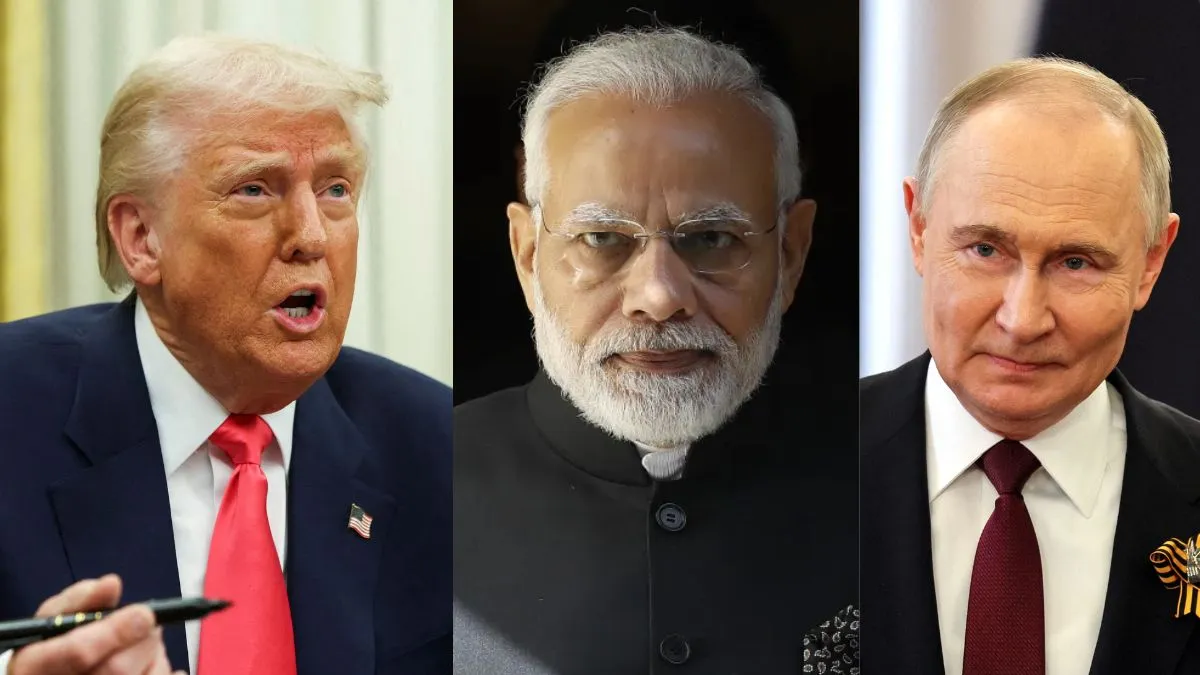The reports of tariff reduction came as US prepares for a closely watched summit between President Donald Trump and Russian President Vladimir Putin in Alaska. All eyes are on whether the outcome could reshape not just the battlefield in Ukraine but also global trade dynamics, especially for India. The duties, framed as part of Trump’s pressure campaign to weaken Moscow’s war economy, have hit India’s exporters hard and injected new strain into one of the world’s most important strategic partnerships.
Tariff Hike Tied To War Context?
Speaking to news agency ANI on Monday, Parliamentary Standing Committee on External Affairs Chairperson Shashi Tharoor said the punitive measure was “in the context of the war” and could be reconsidered if the conflict is resolved.“If after the meeting with Putin, there is a meeting with Ukraine, then the second 25 per cent tariff imposed on us due to buying Russian oil will be removed, because it was in the context of the war,” he noted. The comments came after a briefing by Foreign Secretary Vikram Misri to Tharoor’s panel on the diplomatic and trade implications of the US action. Misri stressed that India’s relationship with Washington extends beyond trade, though the tariff escalation poses significant challenges to key export sectors.
#WATCH | Delhi | Congress MP and Chairman of Parliamentary Standing Committee on External Affairs, Shashi Tharoor, says, “If after the meeting with Putin, there is a meeting with Ukraine, then the second 25% tariff imposed on us due to buying Russian oil will be removed, because… https://t.co/GwAvsNWBoM pic.twitter.com/kgPqux4Fy0
— ANI (@ANI) August 11, 2025
On August 6, President Trump signed an executive order slapping an additional 25 per cent duty on imports from India, citing national security concerns linked to Russian oil purchases. This is on top of the 25 per cent reciprocal tariff announced a week earlier, taking the total to 50 per cent for most Indian goods, except those on a narrow exclusion list. The White House has framed the move as part of a broader strategy to weaken Moscow’s war economy while steering global energy markets towards US exports. According to the US Energy Information Administration, American crude shipments to India surged over 50 per cent in the first half of 2025, making up 8 per cent of India’s oil imports. Trump has accused India of “buying massive amounts of Russian oil” and “selling it on the open market for big profits,” calling it a blow to Ukraine’s war effort.
Impact On India’s Economy
The combined tariff burden allegedly could cost Indian exporters up to $18 billion annually, affecting textiles, pharmaceuticals, auto parts, and electronics—the backbone of India’s US-bound trade. The US is India’s largest export market, accounting for nearly $87 billion in sales last year out of total bilateral trade exceeding $190 billion. Higher duties would make Indian goods less competitive against rivals from Vietnam, Bangladesh, Indonesia, and the Philippines, whose US tariff rates range from 19 per cent to 20 per cent.
The Ministry of External Affairs has denounced the US decision as “unfair, unjustified, and unreasonable,” stressing that India’s energy purchases are driven by market considerations and the need to ensure affordable energy for 1.4 billion people.MEA officials have also pointed to Western double standards, noting that European Union trade with Russia in 2024 far exceeded India’s, and that the US itself continues to import strategic commodities like uranium, palladium, and fertilisers from Moscow.
ALSO READ: Trump’s 25% Ad Valorem Tariff On Indian Goods: What It Means For India’s Economy And Trade With US
Alaska Summit And Peace Prospect
Trump’s meeting with Putin in Anchorage, Alaska, marks the first face-to-face engagement between a US and Russian leader since 2021. The Kremlin has said talks will “undoubtedly work on obtaining a long-term peaceful resolution” to the Ukraine crisis. Trump has hinted at a possible follow-up meeting involving Ukrainian President Volodymyr Zelenskyy, raising hopes of a breakthrough. If a peace agreement emerges, the US may reassess punitive measures linked to the war, potentially including the extra tariff on India.
ALSO READ: Why Did US Impose Tariffs Only On India, Despite Other Nations Buying Russian Oil? Trump Responds | WATCH
For now, New Delhi is treading carefully, balancing its strategic partnership with the US against its long-standing defence and energy ties with Russia. Reciprocal tariffs on American goods have not been ruled out, but officials cited by PTI say diplomatic channels remain open. As Tharoor put it, “We will have to learn our lessons from this experience… but if the war ends and the context for the second tariff disappears, we have every reason to expect its removal.”With just days to go before the Alaska summit, all eyes are on whether Washington’s trade offensive against India will easeor intensifydepending on the outcome of Trump’s high-stakes diplomacy.
